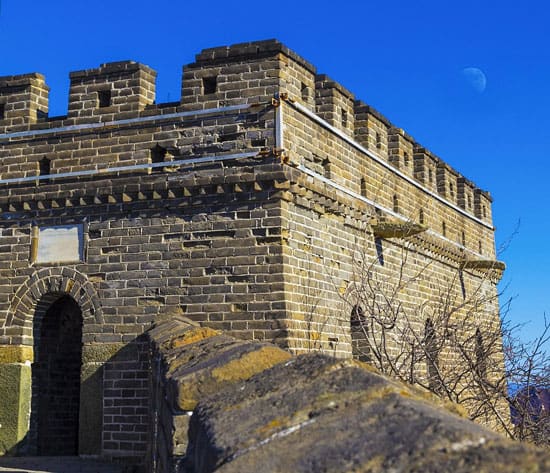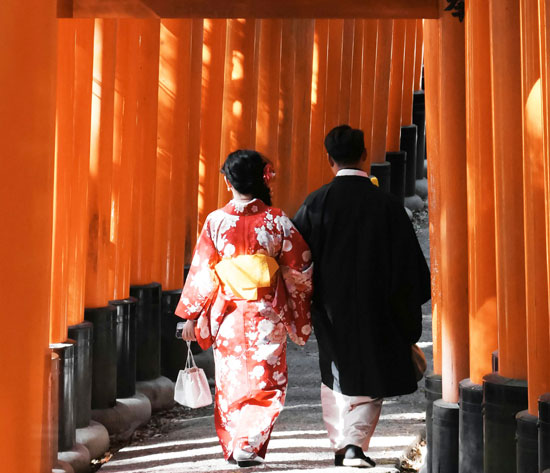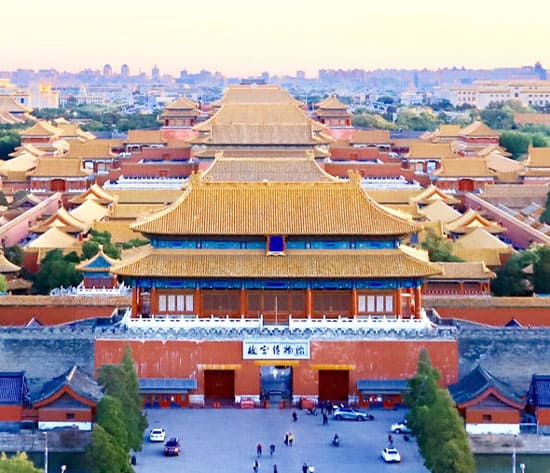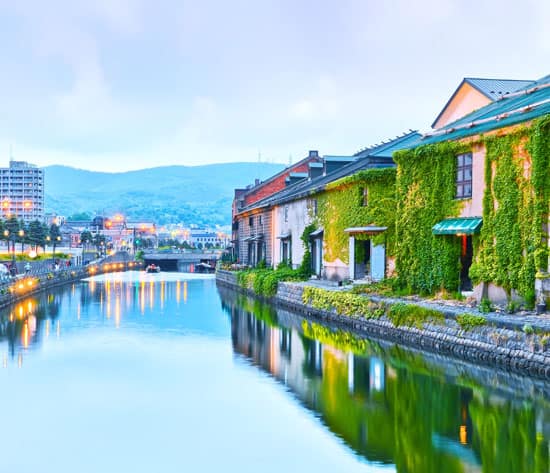Since the Great Wall has been built for over 2,500 years, it has witnessed many successions of Chinese dynasties. Over these centuries, the Great Wall has been through expansion, damage, and restoration. Successive emperors and state lords mostly constructed the Wall to defend the northern border. Apart from border defense, it was also used to enhance cultural communication and trade exchanges with neighboring areas and countries. Except for the reasons mentioned before, this article can help you further explore more about why the Great Wall of China was built.
What was the Great Wall of China Made for?
As we all know, the Great Wall was not built in a day. The earliest prototype dates back more than 2,000 years. According to historical records, there were 9 dynasties ever participated in the construction. However, each state or dynasty built the Wall for different reasons, depending on political situations and comprehensive power at that time.
Why was the Great Wall of China Originally Built?
When talking about the reasons why the Great Wall of China was built, it needs to go back to the 7th century BC. In ancient China, agriculture was the major economic engine. The central plain regions had developed agricultural production, while the northern part suffered from natural disasters.
Compared with the fertility of the southern part, the northern areas were relatively barren and covered much of the area with loess, which mainly relied on pastoralism. At that time, nomads in the north would come down south to seize the cultivated lands. Vassal states would build walls to protect their territories from outside invasion. The Chu State (1115-223 BC) was the first one to be built when the earliest prototype of the Great Wall of China was born.
The Walls were not only for self-defense but also provided a relatively secure environment for farmers to plant crops, which ensured grain production and boosted the agricultural economy.
Why was the Great Wall Continually Built?
Many States Constructed the Great Wall to Resist the Invasion
As mentioned before, the northern nomadic tribes like the Xiongnu and Mongols constantly went to the central plain areas to rob belongings, people, and food. Therefore, building walls was an important means of military defense.
While the First Emperor of Qin, Qin Shi Huang, was unifying the six states in 221 BC, at the same time, the Huns’ forces grew stronger. Under the threat of an invasion from Xiongnu, Emperor Qin connected and repaired the walls built by the three states, Qin, Zhao, and Yan. From then on, the well-known Great Wall was built to prevent the Huns from moving south. The Qin Great Wall stretched from Gansu Province to North Korea and lasted about 5,000 km (3106.9 miles).
Most sections of the Great Wall today were constructed and rebuilt in the Ming Dynasty, such as Simatai, Mutianyu, Badaling, Jiayuguan, etc. Rulers of the Ming Dynasty kept expanding and restoring the Wall, from the emperor of the Ming Dynasty, Zhu Yuanzhang, to the Chongzhen Emperor (Zhu Youjian). The Ming Great Wall was built to consolidate the national border between the Mongols and the Hurchen.
The Ming Great Wall stretched for 8,851.8 kilometers (5,500 miles). During this period, the Ming made great strides in building, especially in brick-making technology. Different from some ancient walls built by rammed earth, a great number of bricks mixed with lime mortar with sticky rice pulp were used in construction, ensuring the wall was more solid and durable.
Another reason why the Great Wall of China was built
1. To Reinforce the Centralization of Power
A vast engineering project, like the building of the Great Wall, needs to spend a lot of manpower and resources. However, this process could improve the national capability to mobilize resources, which reinforced the centralization of power.
The most obvious example was in the Qin Dynasty. It was said that about 300,000 peasants, soldiers, and rebels were sent to build the Wall. To some extent, this kind of requisition increased folks’ burden. However, it reflected the great national power to organize and mobilize resources.
2. To Reinforce Defense
At the beginning of the Han Dynasty (206 BC- 220 AD), although the Great Wall was in disrepair, it still successfully prevented the assault from the Huns, who were increasingly powerful. During the period of Emperor Wu of Han (ruled 156-87 BC), the emperor decided to restore the Qin Great Wall and add some new parallel walls to reinforce defenses. The length of the Han Great Wall ranks at the top of existing walls built by any other period.
3. To Promote Economic Exchanges and National Integration
In the Han, residents were resettled for agricultural development in the north, and troops were transferred for protection, which not only solved grain problems but also promoted the development of frontiers.
During the same period, the emperor sent ambassadors to pay a visit to western areas, the Silk Road was opening. At the same time, the ruler ordered to construction of the Great Wall along the Hexi Corridor, which belongs to a part of the Silk Road. From then on, many passes were built to provide protection for the Silk Road. It also improved cultural and political exchanges between China and surrounding countries.
When in peacetime, people from nomadic nations and folks of the central plain would trade to exchange goods along the Great Wall. Folks from the central areas would export food and clothes to the northern people. And the nomads would sell animals or some other products to people living within the Wall. This kind of exchange not only provided a chance for people from both sides to know more about each other but also promoted national integration and economic exchanges.
4. To Define the National Border
As a matter of fact, before the Qing Dynasty, the Wall was responsible for making the territorial boundaries clear to reduce conflict with surrounding ethnic groups, especially in the Han Dynasty.
After the 17th century, the rulers of the Qing Dynasty (1644-1912) did not build China's Great Wall even banned the construction of the Wall. The emperors stuck to protecting the nation through the policy of conciliation and support from the international community. From this dynasty, the Great Wall was mainly for defining national borders rather than for defending.
5. Rebuilding for Tourism
Until the establishment of the new China, the reconstruction of the Great Wall, especially the Badaling Wall, was mentioned in 1952. At that time, a well-known saying goes that the Man Who Doesn’t Reach the Great Wall Is Not a True Man, from Chairman Mao.
In 1987, as the typical Wall, Badaling was opened to the public, showcasing Chinese culture to people around the world.
In 1979, the National Cultural Heritage initiated the Great Wall Protection Plan, mainly focusing on sections like Badaling, Mutianyu, Jinshanling, etc.
In 1987, UNESCO’s World Heritage Committee included the Great Wall of China in the World Heritage List, which enhanced its status and protection.
How Did the Great Wall Work in Ancient Wars?
Why was the Great Wall of China originally built? Even though the answer has been mentioned before, the wall building was for military defense. How exactly did it work in the real war? It needs you to know that the Great Wall was not simple, but a complete military defense system, composed of castle walls, passes, beacon towers, etc. It was built along the border and steep terrains, like mountains, and rivers.
In ancient times, soldiers would station in beacon towers to observe enemies’ positions and distances. It was hard to imagine how to communicate without a network. The Great Wall played a big part in delivering messages. Once soldiers got the slightest sign of the enemy, they could early warning and deliver the signal for combat to other soldiers in surrounding towers so that they could get ready earlier before the war started.
Moreover, it would consume a lot of grains, weapons, and horses in a real war. The suppliers could be sent to the frontier through the Great Wall in time. There were troops garrisoned in each fortress. Once the wall was under attack after the signal was sent, soldiers in surrounding passes or beacon towers would come to support. In this way, the reinforcement would be stronger and faster to enhance protection for folks and territory.
Why is the China Great Wall still so Important Today?
Symbol of Chinese Culture
The Great Wall of China has become the most representative and marvelous tourist attraction nowadays, attracting numerous tourists from all over the world to learn about Chinese culture.
The construction process of China's Great Wall has been through thousands of years, stretching across many Chinese dynasties. After witnessing all these displacements, it symbolizes the unification of China and the resilience and bravery of the Chinese nation. Every tile is mixed with the wisdom and effort of ancient people.
To some extent, the existence of the Great Wall strengthens a sense of national identity and belonging. In ancient times, it was a solid barrier to resist invasion. For people nowadays, the Wall is not just the top tourist attraction, but also a significant vehicle of Chinese culture, carrying the weight of history.
World-class Tourist Attraction
The Great Wall of China was originally built to protect the territory from foreign invaders. For now, as one of the New Seven Wonders of the World, this incredible human landscape draws about 8 million travelers from home and abroad every year, of which the Badaling Wall accounts for over half of the total visitors. And the Mutianyu Great Wall is especially welcomed by foreigners.







Have a Question?
You might see your comment appear on this page, but your email address and full name will not be published. Your personal information will remain confidential. Our Asia travel experts will get back to you as soon as possible. Required fields are marked *